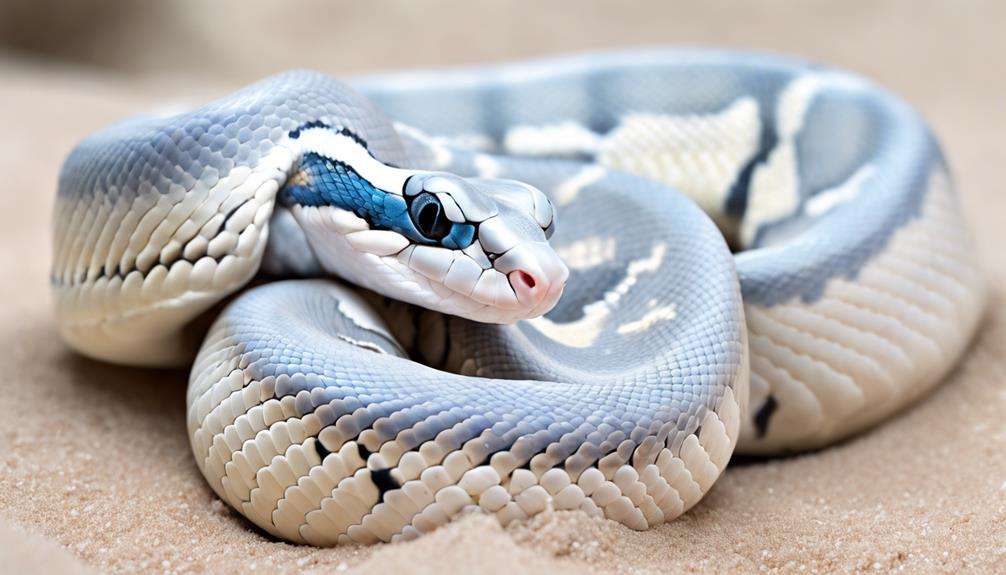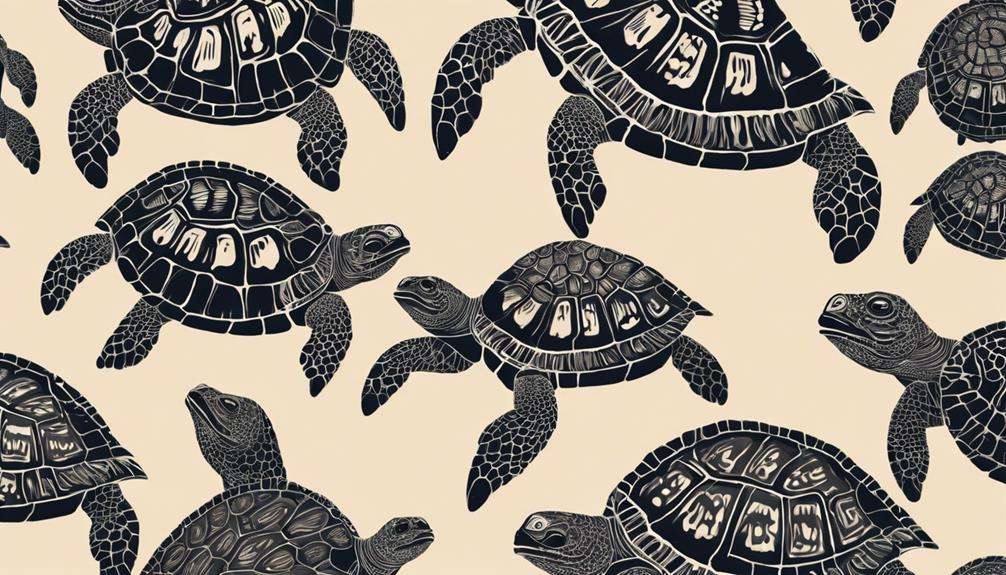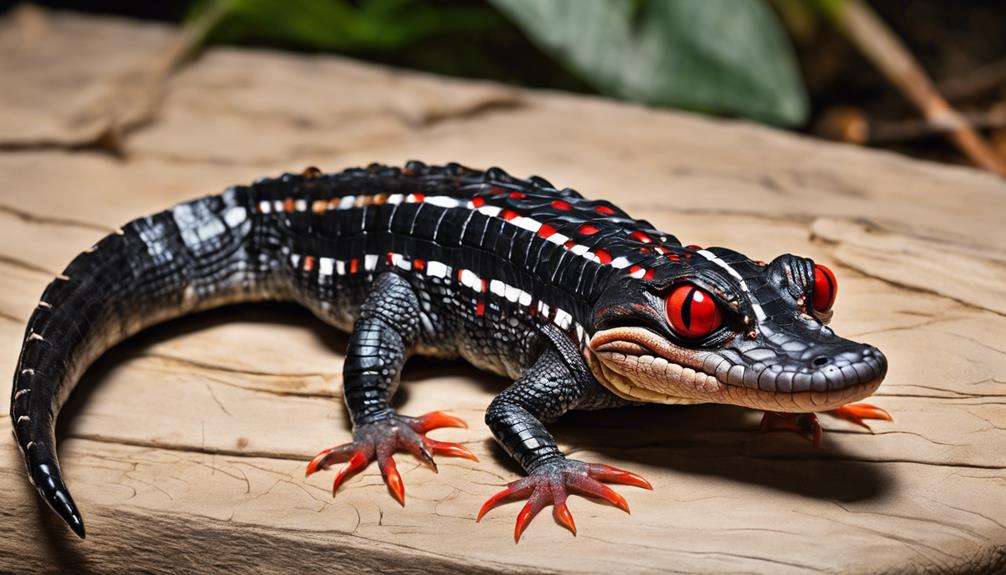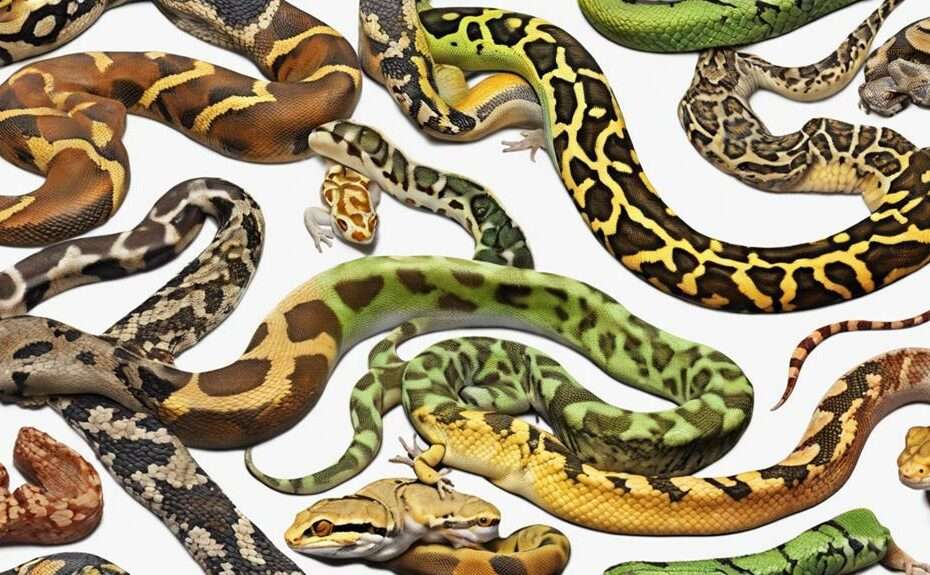Imagine your reptile collection as a diverse ecosystem, each species adding its unique color and charm. As a collector, you aim for variety and beauty in your display.
But have you considered the exquisite patterns of the Chinese Water Dragon or the mysterious allure of the Satanic Leaf-Tailed Gecko? These lesser-known breeds hold intriguing secrets waiting to be discovered, enticing collectors with their enigmatic presence and unusual features.
Key Takeaways
- Chinese Water Dragon: Unique color-changing abilities and vibrant crest make them a captivating choice.
- Satanic Leaf-Tailed Gecko: Highly sought after for exceptional camouflage resembling a leaf.
- Blue-Eyed Leucistic Ball Python: Valuable in breeding due to stunning blue eyes and white scales.
- Frilled Dragon: Docile nature despite intimidating frills, perfect for collectors seeking unique behavior.
Chinese Water Dragon
Chinese Water Dragons, known scientifically as Physignathus cocincinus, are sought after by reptile enthusiasts for their alluring appearance and unique characteristics. These arboreal lizards, native to Southeast Asia, captivate collectors with their vibrant green coloration, distinctive crest, and color-changing abilities based on mood and temperature. In captivity, they require a spacious enclosure with branches, foliage, and a water feature to replicate their natural habitat accurately. Chinese water dragons are omnivores, needing a varied diet of insects, fruits, and leafy greens to thrive.
When compared to other reptile breeds like ball pythons and corn snakes, Chinese water dragons stand out due to their arboreal nature and specific habitat requirements. While ball pythons and corn snakes are terrestrial and have different dietary needs, Chinese water dragons necessitate UVB lighting, precise humidity levels, and temperature gradients for the best health. Ensuring these conditions are met is essential for the well-being of Chinese water dragons in captivity. Their unique characteristics and care requirements make them a fascinating choice for reptile enthusiasts looking for an appealing and rewarding pet.
Satanic Leaf-Tailed Gecko
Native to Madagascar, the Satanic Leaf-Tailed Gecko (Uroplatus phantasticus) is a gecko species renowned for its exceptional camouflage that closely resembles a lifeless leaf. Inhabiting the rainforests of Madagascar, these geckos have evolved a unique flattened body shape and tail that mimics a dried leaf, allowing them to blend seamlessly into their environment. Their specialized camouflage serves as a remarkable adaptation, aiding in both hunting and avoiding predators under the cover of darkness.
As nocturnal creatures, Satanic Leaf-Tailed Geckos primarily feed on insects, using their leaf-like appearance to ambush unsuspecting prey. This species' striking resemblance to a dead leaf has captivated reptile enthusiasts and collectors worldwide, making them highly sought after for their intriguing appearance and fascinating behavior. The intricate design of their camouflage and their natural habitat in Madagascar add to the allure of these geckos for those looking to add unique and visually stunning reptiles to their collections.
Blue-Eyed Leucistic Ball Python

The Blue-Eyed Leucistic Ball Python, prized for its stunning blue eyes and immaculate white scales devoid of patterns, is a highly coveted morph among reptile collectors and breeders. This morph results from the combination of the leucistic and blue-eyed leucistic genes, producing a visually striking snake that stands out in the ball python market.
Known for their docile temperament, Blue-Eyed Leucistics are favored by beginner keepers and reptile enthusiasts alike. These snakes offer a fantastic opportunity for those looking to start their reptile collection due to their relatively easy care requirements compared to more demanding species like the leopard gecko.
Additionally, breeding Blue-Eyed Leucistics can be financially rewarding, as the offspring often inherit their parents' desirable traits, making them valuable in the reptile breeding community. With their beauty, rarity, and gentle nature, Blue-Eyed Leucistic Ball Pythons are an excellent choice for both experienced collectors and those entering the world of reptile keeping.
Frilled Dragon
Frilled dragons exhibit unique physical characteristics, especially their impressive frills that serve as a means of communication and defense.
Their ideal habitat should include ample climbing opportunities and a designated basking area to facilitate thermoregulation.
Understanding their temperament and behavior is important for providing appropriate care and ensuring the well-being of these fascinating reptiles.
Unique Physical Characteristics
With a unique frill that can expand around their neck, frilled dragons exhibit a striking physical characteristic that serves both defensive and social purposes. This frill, supported by cartilage rods, is a remarkable adaptation that can be intimidating to predators or attractive to potential mates.
When not in use, the frill can be folded back against the body, allowing for efficient movement through the arboreal habitats where frilled dragons are commonly found. Native to northern Australia and southern New Guinea, these reptiles thrive in tropical and subtropical forests, spending much of their time in trees.
The frill is a key feature that sets frilled dragons apart, making them a captivating species for collectors interested in unique physical traits in reptiles.
Ideal Habitat Requirements
To guarantee excellent health and well-being for your frilled dragon, creating a habitat that mimics its natural environment is essential. Frilled dragons are arboreal creatures, needing tall enclosures with ample vertical space for climbing and basking. UVB lighting is vital for calcium metabolism and overall health.
Maintain temperatures between 75-85°F to help them regulate their body temperature effectively. A varied diet of insects, fruits, and vegetables is necessary for their nutritional needs. Humidity levels should be kept around 60-80% to replicate their natural habitat.
Temperament and Behavior
When observing the temperament and behavior of frilled dragons, it's important to note their unique defensive display, where they extend a large frill around their neck to appear larger and intimidate threats. Despite this intimidating display, frilled dragons are generally docile and can be fascinating pets for collectors.
When considering bringing a frilled dragon into your home, make sure to provide a habitat that mimics their natural environment, including ample vertical space for climbing. These arboreal lizards prefer spending time in trees and require hiding spots in their enclosure to reduce stress. Regular handling and a consistent routine can help shy frilled dragons become more confident and interactive.
When purchasing a frilled dragon, make sure you source it from reputable pet stores to support responsible breeding practices.
Axolotl
Axolotls, unique amphibians renowned for their distinctive appearance and remarkable regenerative capabilities, are often favored by collectors for their intriguing behavior and relatively straightforward care requirements. As beginner pets, axolotls are a great choice due to their adaptability to captive environments and manageable care needs.
These fascinating creatures are commonly kept in aquariums, requiring a spacious tank with cold, clean water and a suitable hiding spot. Ensuring a stable water temperature between 60-64°F is crucial for their well-being. Axolotls are carnivorous and primarily feed on live or frozen foods like bloodworms, brine shrimp, and earthworms.
Regular water quality checks and changes are essential to maintain a healthy aquatic environment for these amphibians. It's worth noting that axolotls are critically endangered in the wild, emphasizing the importance of responsible captive breeding practices for their conservation. With their striking colors and unique characteristics, axolotls make engaging additions to any collector's repertoire.
Mata Mata Turtle

The Mata Mata turtle showcases a unique shell appearance resembling tree bark, aiding in its camouflage within freshwater environments.
With slow and deliberate movement, these turtles navigate their habitats, utilizing their specialized hunting technique to capture prey.
Their aquatic habitat requirements include slow-moving rivers, swamps, and marshes, making them fascinating subjects for collectors interested in their distinct adaptations.
Unique Shell Appearance
With its shell resembling intricately patterned tree bark, the Mata Mata turtle stands out as a unique reptile breed sought after by collectors for its distinctive appearance. Mata Matas, scientifically known as Chelus fimbriata, have a flat and rough shell that mimics the texture and coloration of tree bark, allowing them to blend seamlessly into their environment.
This species, native to the Amazon and Orinoco river basins in South America, has evolved this camouflage to ambush prey like fish and crustaceans. The wide, flattened heads of Mata Matas, coupled with their intricate shell patterns, aid in their specialized hunting techniques.
Enthusiasts of unique reptiles are drawn to the Mata Mata for its striking appearance and fascinating behavior, making it a prized addition to collections of experienced reptile keepers.
Slow and Deliberate Movement
Slow and deliberate, the movement of the Mata Mata turtle allows it to seamlessly blend into its surroundings while patiently waiting for prey to pass by. Originating from South America's freshwater habitats, these turtles have a shell that resembles bark, aiding in their camouflage strategy for ambushing prey.
Mata Matas, primarily carnivorous, feed on fish and aquatic invertebrates using a unique hunting technique of creating a vacuum by opening their mouths wide to suck in their prey. Their slow and methodical movements are a key adaptation for their hunting success.
For collectors looking for reptiles with a similar pace, Rosy boas make great choices due to their calm demeanor and deliberate actions, making them fascinating additions to any collection.
Aquatic Habitat Requirements
When setting up an aquatic habitat for Mata Mata turtles, consider the following essential requirements to guarantee their well-being and peak health.
- Mata Matas require large aquatic habitats, with a minimum size of 100 gallons for juveniles and at least 250 gallons for adults.
- They need a deep water area for swimming and a basking spot with a heat lamp to maintain proper body temperature.
- Mata Matas are carnivorous, feeding on fish, crustaceans, and aquatic invertebrates, requiring a varied diet for peak health.
- Water quality is critical for Mata Matas, with filtration systems and regular water changes to prevent ammonia build-up.
- Providing hiding spots, aquatic plants, and a substrate that allows for burrowing is essential for the well-being of Mata Mata turtles.
Red-Eyed Crocodile Skink

Native to New Guinea and Indonesia, the red-eyed crocodile skink is a small, semi-aquatic lizard known for its striking red-orange eyes and unique dragon-like appearance. These skinks are pretty easy to care for, as long as you meet their specific requirements.
They thrive in high humidity environments and need a moist habitat to stay healthy. Red-eyed crocodile skinks have a shy and elusive nature, so it's important to provide them with plenty of hiding spots in their enclosure.
Despite their timid behavior, these lizards are sought after by people who really appreciate their rarity, stunning colors, and intriguing behaviors. To guarantee the well-being of your red-eyed crocodile skink, create a habitat that mimics their natural environment with plenty of vegetation, a shallow water dish for soaking, and a substrate that retains moisture.
Frequently Asked Questions
Is Breeding Reptiles Profitable?
Breeding reptiles can be profitable, but it comes with challenges and financial risks. Understanding market demand is vital for maximizing investment returns. Research, planning, and niche development can increase profitability in this venture.
What Is the Most Bought Reptile?
Ball pythons stand out as the most popular reptile breed, coveted by collectors for their myriad morphs and gentle disposition. These best sellers captivate enthusiasts with their exotic charm, making them a top choice in the reptile hobby.
What Reptile Likes to Be Held the Most?
When it comes to reptile handling and socialization, some species stand out for their affinity towards bonding with humans. Certain reptiles, like bearded dragons and leopard geckos, often enjoy being held and interacting with their owners.
What Is the Hardest Reptile to Own?
Owning a venomous snake is the most challenging care you can undertake. Rare species demand specialized knowledge, permits, and safety protocols. Handling them requires expertise due to the life-threatening bites they can deliver, necessitating caution and responsibility.
Conclusion
Congratulations on choosing these unique reptile breeds for your collection! Just like a vibrant mosaic of scales and colors, each breed brings a different piece of the puzzle to create a diverse and fascinating display.
From the graceful Chinese Water Dragon to the mysterious Satanic Leaf-Tailed Gecko, your collection is sure to captivate and intrigue anyone who gazes upon it.
Embrace the beauty and wonder of these extraordinary creatures as they bring a touch of the wild into your world.
